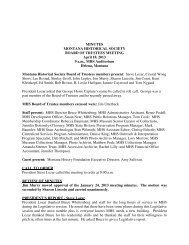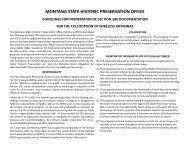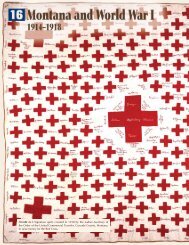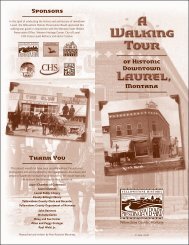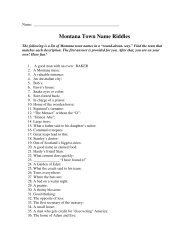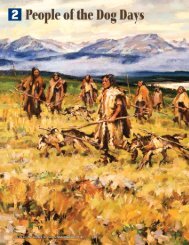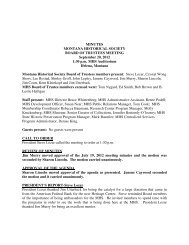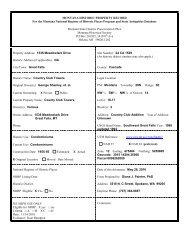Chapter 11 - Montana Historical Society
Chapter 11 - Montana Historical Society
Chapter 11 - Montana Historical Society
You also want an ePaper? Increase the reach of your titles
YUMPU automatically turns print PDFs into web optimized ePapers that Google loves.
“<br />
It has become the settled policy of the<br />
Government to break up reservations,<br />
destroy tribal relations, settle Indians<br />
upon their own homesteads, incorporate<br />
them into the national life, and<br />
deal with them not as nations or tribes<br />
or bands, but as individual citizens.<br />
”<br />
—COMMISSIONER OF INDIAN AFFAIRS THOMAS J. MORGAN, 1890<br />
FIGURE <strong>11</strong>.16: This poster, issued by the<br />
U.S. secretary of the interior in 1910,<br />
offered Indian lands to farmers and<br />
speculators at low prices. In <strong>Montana</strong><br />
the government offered <strong>11</strong>,034 acres at<br />
$9.86 per acre—about $216 today.<br />
2 2 0 P A R T 2 : A C E N T U R Y O F T R A N S F O R M A T I O N<br />
Once land was allotted, it was owned by an<br />
individual, not by the tribe. Allotted lands were<br />
held in trust (when something is owned by one<br />
person but managed by another—in this case,<br />
the government) for 25 years. After that, they<br />
could be sold.<br />
The land that was not allotted to Indian<br />
individuals or families could be declared surplus—extra.<br />
Often these surplus lands were sold<br />
to white settlers, businesses, and homesteaders at<br />
discount prices.<br />
The Dawes Act affected each reservation differently. Allotments came<br />
to the Crow Reservation fi rst, starting in 1888. But it took many years to<br />
complete the allotment process, and before it was fi nished, Crow leaders<br />
fought for— and won —the right to determine how the process would<br />
work. After allotments were completed in the early 1920s, most of the<br />
land remained in the hands of tribal members. Determined and skillful<br />
Crow negotiators kept land from being<br />
sold to non-Indians as “surplus” land.<br />
Allotments began on the Blackfeet<br />
Reservation in 1907. The government<br />
designated 156,000 acres as surplus. The<br />
Blackfeet tribe was $1 million in debt after<br />
following federal instructions to build a<br />
large irrigation system. To pay off this<br />
debt, the government wanted to sell off<br />
the surplus land as quickly as possible.<br />
But the Blackfeet protested the land<br />
sale. An educated Blackfeet spokesman<br />
named Robert Hamilton testifi ed repeatedly<br />
before congressional committees and<br />
with the federal Offi ce of Indian Affairs.<br />
Finally, in 1919, Congress accepted a<br />
compromise. Surplus Blackfeet land<br />
was added to individual allotments and<br />
remained in Blackfeet hands.<br />
The Fort Peck Reservation was allotted<br />
between 1908 and 1913. This was the<br />
height of the homestead boom (see <strong>Chapter</strong><br />
13). Each adult male received 320 acres<br />
plus a few acres of farm and timber lands.<br />
After allotments were completed, the government<br />
declared 1.3 million acres surplus<br />
and open to homesteaders. Today most of<br />
the best agricultural land on the Fort Peck<br />
Reservation is owned by non-Indians.



